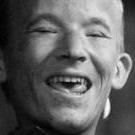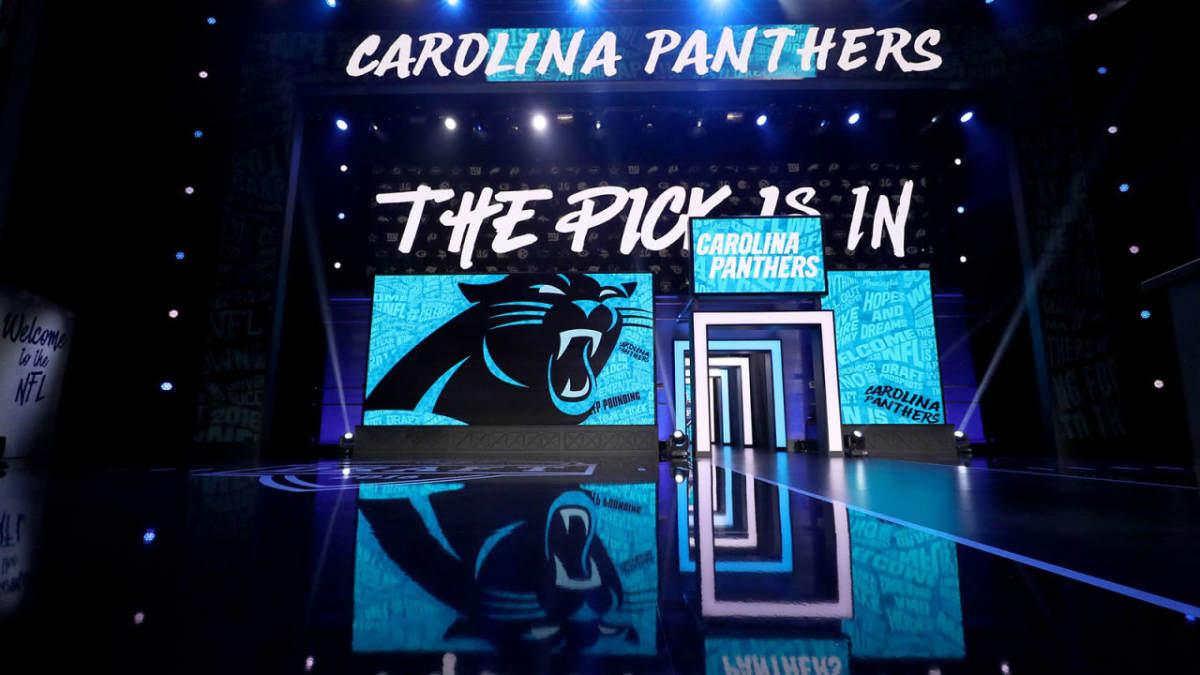-
Posts
31,413 -
Joined
-
Last visited
Content Type
Profiles
Huddle Wiki
Forums
Gallery
Everything posted by MHS831
-
Hilarious. I think Bryce will be a game manager. he is already showing us that he is only as good as his supporting cast. Bryce is likeable, tough, and as you say, "Slippery." Give him weapons and he will be the point guard at best.
-
I agree--He is still approaching average, and average is what half the teams in the NFL are or strive to be. However, average stats on a bad team are better than average stats on a good team. Most of this year, Bryce has had a strong running game--he lost TMJ, Mingo, Johnson, and for many games, AT (regardless of how good you think these players were, they required time and reps to develop chemistry). While improving his numbers, he lost his starting C and his WRs were basically Coker, XL, and Moore. His TE, another rookie and Tremble, were his weapons. Under those circumstances, other good QBs have failed. Rodgers in NY has better weapons and a better defense. Darnold has weapon and an OL now, and he is doing well, but he failed here. Baker? Ditto. Bryce has an OL--and this is a result of that--before his benching, he was gun shy and traumatized--he got to see the protection etc. he is now in full recovery. Will his improvement continue if we upgrade our D, WR room, and maybe a TE? Yes. How much? That is the question we will be answering in 2025.
-
I once was attacked and I tried defending myself. It escalated, so I contacted the mods to explain how, in my view, it crossed the line and that it was persisting. The troll was very insulting and trolled me on other threads--giving me poo, insulting me--now, I just want to find a pocket of people with common sense and good football ideas to communicate with, but he kept showing up. After blocking him, he kept commenting about me to the others on the thread. Privately, I reported it. It does not matter if you agreed with the complaint or not, you handled it like a troll yourself, without examining the details of my concern. You decided to force your opinions about me scold me on a public thread, insisting that I engaged in it--you obviously had not read the threads, but that was not the issue. The issue is that you decided to address the matter in the public threads--not privately as it was presented to moderators. In my view, you were using the moderator position to troll me--nobody reported me to moderators--so you were way out bounds. So, I did as you suggested and this was the result.
-
So you are suggesting that personal attacks should be ignored and we should all man up behind our false names and fake images. That is so badass!
-

A Tankathon Approach to the remaining Schedule
MHS831 replied to MHS831's topic in Carolina Panthers
I think Sanders is OUR #1---and I agree that we need better. Sanders needs to be a #2. I was also a McConkey drum beater. When you draft a RB off the operating table in the second round--there is reason to question the decision. They are found all day on day 3. Gonna be fun. -

A Tankathon Approach to the remaining Schedule
MHS831 replied to MHS831's topic in Carolina Panthers
Convince me to like him too-clear my bias, in other words. I worry that Ole Miss (and Miami, for that matter) have those high-octane offenses that tend to inflate stats. Matt Carrol's stats for example. Miami and Ole Miss had the top 2 offenses in the nation. I would watch the film on Harris or Xavier xxxxxx from Miami-- -

A Tankathon Approach to the remaining Schedule
MHS831 replied to MHS831's topic in Carolina Panthers
THAT is what I look for at WR--does the WR extend his hands toward the ball and does the WR catch it without bobble. Secondly, how late does he raise his hands? I have not yet watched videos on the WRs, so I am getting excited reading this. I did watch some T-Mac and Luther, and I like them, but I would have 3-4 WRs from last year's class over them both...I think speed is important, but 40 speed is not the gauge--look at the 3 cone--how fast are they exploding after a cut? etc. -

A Tankathon Approach to the remaining Schedule
MHS831 replied to MHS831's topic in Carolina Panthers
In fairness, I like Morgan's intent in this past draft--we got a #1 TE in round 4, a solid LB in round 3--the first two rounds were gambles--but if Brooks became solid (comparing him to Jonathan Stewart and Thomas Davis--taking liberties) and if XL works on his hands over the offseason, I think we are going to consider the 2024 draft a success. And it should be noted that we did not have our first round pick. This draft was purely long term--it told me the plan would be a 2-year process--3 if bryce had not shown signs of life. XL was the head scratcher--and what bothers me about it--they told him they were picking him and he told the media. However, if the light comes on, he can become special because he has the tools. Not sure I want to draft projects early, but we did for the past two years. I am still not sold on Bryce, but he was putting the ball where it belongs and he is much more confident now. -

A Tankathon Approach to the remaining Schedule
MHS831 replied to MHS831's topic in Carolina Panthers
Just read up on him a bit--love the WR who got where he is due to diligence, hard work, focus on mechanics and details, etc. Some rely on talent and ride the wave as far as it takes them--since they did not have to work for what has, for a lifetime, been "god given" talent that has always resulted in success--I think they are simply feeling for their ceilings. -

A Tankathon Approach to the remaining Schedule
MHS831 replied to MHS831's topic in Carolina Panthers
And THAT is how teams become champions--look at the Steelers' drafts in the 70s---the Seahawks in the 2000s... You become relevant on days 2 and 3 of the draft. Lately, we have been crippled by a huge dead cap and some mediocre to bad first round selections. Sure, we got a decent to good player, but at the position we drafted, there are better players drafted afterwards. -

A Tankathon Approach to the remaining Schedule
MHS831 replied to MHS831's topic in Carolina Panthers
I thought Chicago made the right QB choice....I thought Atlanta was stupid (still may be) for signing Cousins and then taking Pennix. I saw the Nix Brees similarities, so when Payton took Nix, I knew he knew what he was doing--but I did not see it. -

A Tankathon Approach to the remaining Schedule
MHS831 replied to MHS831's topic in Carolina Panthers
Wilson is a 1000 yard WR on a bad team...Horn has been injured more than he plays and he gets more than his share of penalties--to get something you have to give something up--We are about to have to pay Horn a max salary for part time performance--you have to factor his contract status, injury history, and the fact that he has 1 interception in over 1000 snaps, penalties--it is not as incredible as it sounds. However, I get that the quiet CB is the best CB--and there are games when you don't know Horn is out there. But if you are looking beyond the actual players and at their entire situation, it makes sense. Wilson would save you a lot of cap room vs. the Horn contract for a season. It would allow you to sign a solid DT and maybe another solid CB in free agency. So if you look at the big picture, you will see that an impulsive reaction is unjustified. It would be a risky chess move, but one that can be defended or critiqued--by people who have the ability to see the big picture and analyze multiple perspectives. -

A Tankathon Approach to the remaining Schedule
MHS831 replied to MHS831's topic in Carolina Panthers
I agree that the draft has depth at WR, Edge, and I would add that I like the LB depth as well. I am not liking the depth at starting QB (I am not sure there is one) but I love the depth at developmental QBs, TE, OL, or #1 WRs--if that is a real thing (theory). I do like the WR depth overall. I think there are gems throughout the draft at WR, and it depends on the system, qb, and chemistry with the other WRs, but there are some great WRs out there drafted late or not at all. -

A Tankathon Approach to the remaining Schedule
MHS831 replied to MHS831's topic in Carolina Panthers
He is not in a good situation,and it is getting to him. I think this would be a great acquisition. What would I trade for him? Imagine Wilson, AT, XL Coker and maybe a stud TE. Here is an interesting question: Would you trade Horn for him straight up? They would love the Horn / Sauce CB tandem, we would not have to pay him a king's ransom, etc. I would make the trade--injury history/salary, etc. -

A Tankathon Approach to the remaining Schedule
MHS831 replied to MHS831's topic in Carolina Panthers
There have been gems found late at WR every year. Everyone is saying that we need a #1, and I get it. However, Coker and XL are rookies and they will improve--how much? Who knows. Theilen has been great, but of course, he is showing signs of aging-drives with his turn signal on and goes to Golden Corral at 4:30 for dinner. Last year was the year to grab a #1--I am not even sure the best WR in this draft will be a #1. Kids can be successful in college with suspect hands and bad route running--if they can run they get overevaluated, in my view. I think a kid who runs crisp routes, is fundamentally sound, has great hands, etc. would give us what we need--especially if we get a top TE--which may be the way to go in a down WR market and draft. Sanders is showing signs--and he would still be effective as the #2 WR. Tremble as the #3. The kid from Penn State could be the sleeper pick in round 2. Mark my wirds!! -

A Tankathon Approach to the remaining Schedule
MHS831 replied to MHS831's topic in Carolina Panthers
Thanks--lotta ways to go here, and this is just one of them. We need to hire the new DC early, if that is what we do. -

A Tankathon Approach to the remaining Schedule
MHS831 replied to MHS831's topic in Carolina Panthers
There is another WR who seems to be under the radar--Bech, from TCU I think. Like Legette, had a strong SR year without doing too much before that, but his hands are great--will see how he runs. Beck reminds me of AT, from what little I have seen -

A Tankathon Approach to the remaining Schedule
MHS831 replied to MHS831's topic in Carolina Panthers
I think we could use a stud TE as well, and if we shift to the 4-3, a MLB. We are going to have to sign a few free agents--not sure a true #1 will be available--free agency (cost) or draft (talent). I think our time might be better spent working Coker and XL over the offseason and bringing in WR or two with a high ceiling whose stock is down. Cade Mays is slightly below average but still young--I think we have to get him more comfortable with the C position and go with him another year. Just my opinion. Defense is the priority. I was so sick of listening the announcers on TV Sunday talk about what a great job Robinson has done anchoring the middle. He has a 54.1 PFF score which is higher than I thought it would be. Shy Tuttle is at 44.1 which is illegal in 34 states. We get Brown back--huge upgrade---and we could use another--I think we are likely going 4-3, so it is possible Robinson would be better beside Brown; his cap hit will be $8m, so that is not higher than a first round DT would be. I still think you grab a DT later on day 2. In a 4-3 (assuming that is what we do) We need an Edge pass rusher to play with Clowney. On the other side of the ball, Wonnum has been getting pressures but not holding the edge well. DJ Johnson has not been getting pressures but is doing better at holding the edge. Barno is on the smallish side for a 4-3 DE, but he has looked decent in limited play. What do you do? Depends on the defense, but I would say get a stud pass rusher early--as in round 1 if possible. I also think MLB is a bigger need than advertised--Jewell has not been great--people think he is better than he is.30 and has only 60+ tackles. Understand that the DTs have not kept him clean, but at 30 with a 56 PFF score (about right, imo) we need a Beason, Morgan, Mills, Luke, etc. in the middle. From the perspective of the Panthers switching to a 4-3 (hypothetical), MLB suddenly becomes a big need, in my view. -

A Tankathon Approach to the remaining Schedule
MHS831 replied to MHS831's topic in Carolina Panthers
That is exactly like I feel. Not a huge fan of the WRs this year. I do, however, like Xavier Restrepo from Miami in round 2. He has great hands and is always open. Probably more suited for the slot. -

A Tankathon Approach to the remaining Schedule
MHS831 replied to MHS831's topic in Carolina Panthers
From what I read, I am not seeing that. We don't think WR is the top priority in the draft-- -

A Tankathon Approach to the remaining Schedule
MHS831 replied to MHS831's topic in Carolina Panthers
Take a look at our top WRs aside from XL--who arguably is our fourth best WR right now: AT (undrafted), Coker (undrafted), and Moore (7th round). You build from the inside out, back to front. I think we can get a TE, RB, and maybe even a WR on day 3 of the draft. I think we should leave days 1 and 2 with a top edge, DT, and MLB (not a Jewell fan, and if we go 4-3...) I would also need to evaluate Center but Mays has been OK and should improve. Some are arguing that we need a #1 WR, and rightly so, but XL, Coker, etc. will improve. Add some people who can catch and get open--they are not #1 WR out of college--they are #1 candidates. Fill the stall and let the fastest horse race. -

A Tankathon Approach to the remaining Schedule
MHS831 replied to MHS831's topic in Carolina Panthers
Good summary -

OFFICIAL Panthers vs Buccaneers Game Day Thread
MHS831 replied to TheSpecialJuan's topic in Carolina Panthers
Last I saw, Giants beating Colts--they can't do anything right! -

A Tankathon Approach to the remaining Schedule
MHS831 replied to MHS831's topic in Carolina Panthers
Well I guess its settled then. -

A Tankathon Approach to the remaining Schedule
MHS831 replied to MHS831's topic in Carolina Panthers
If he is available, knowing what we know about probable free agents (who would come to Charlotte) and the draft, WR is almost a necessity--but if TMac and Abdul and Graham are all available, I am not sure the Panthers take TMac. The draft is deep at DT, and there are some edge players who can be developed. There are some DTs who can pressure the qb and collapse the pocket--they may be as valuable as an Edge---so it will be interesting. Gotta get WR help and it has to be top shelf help.



